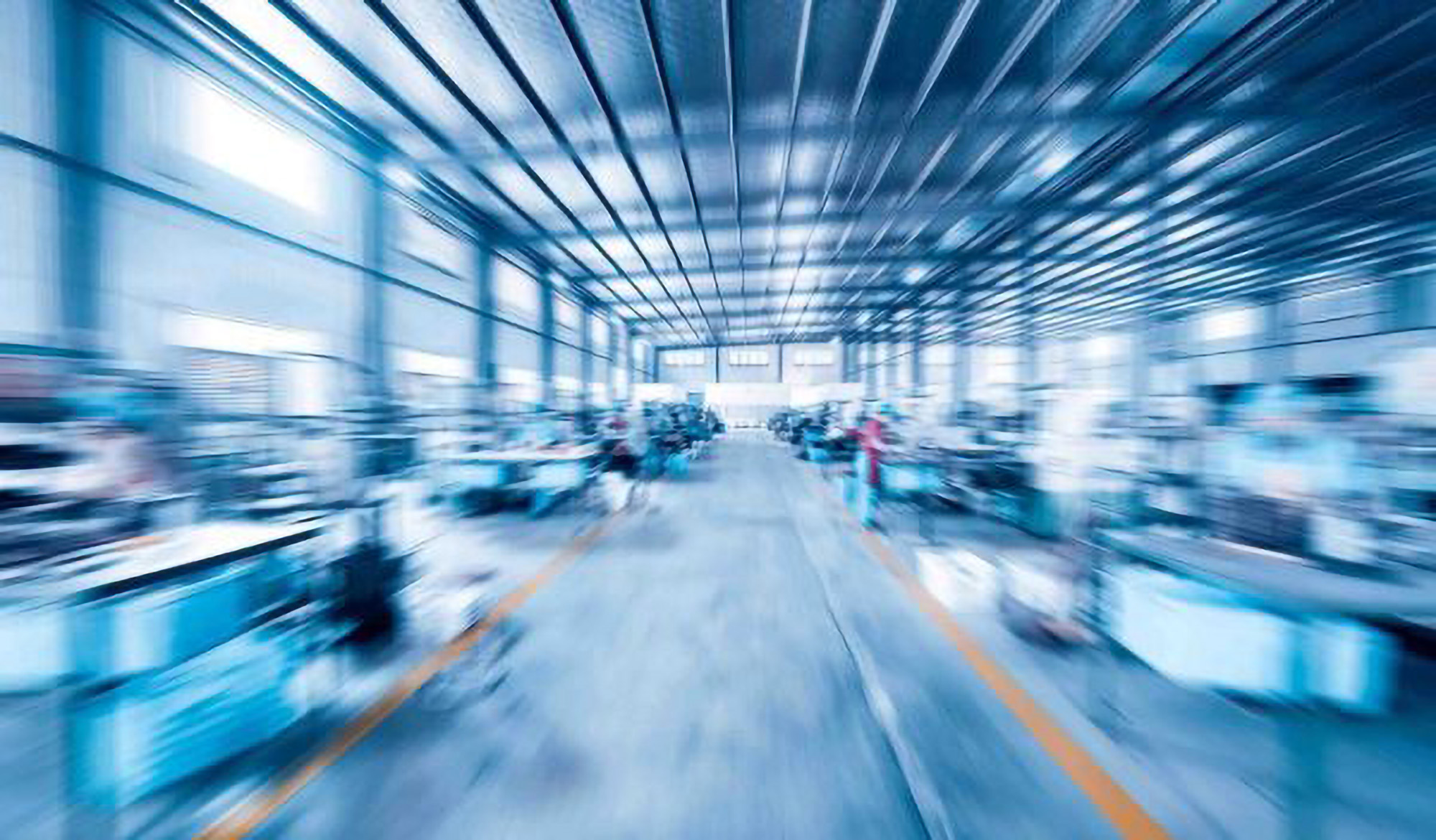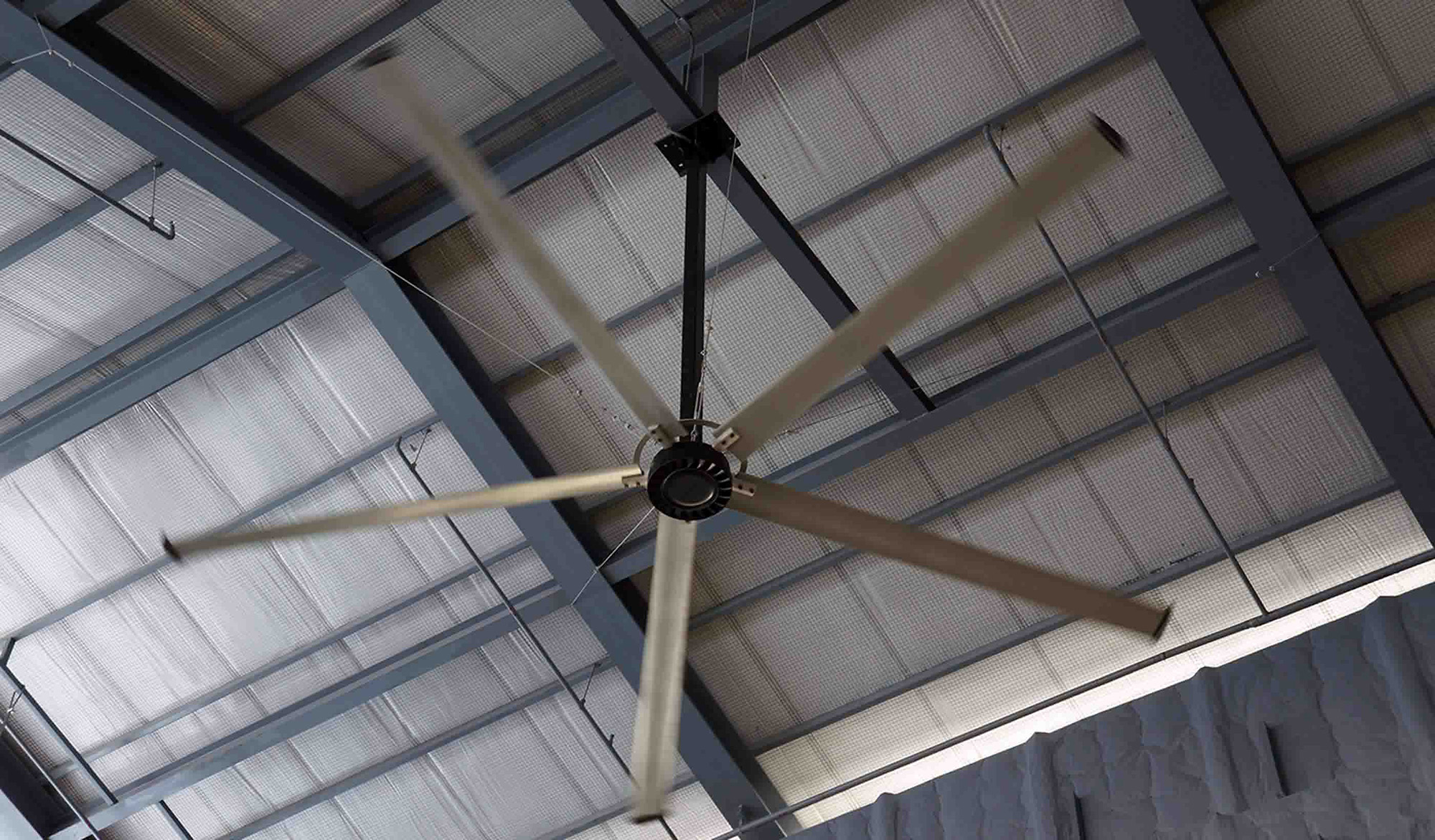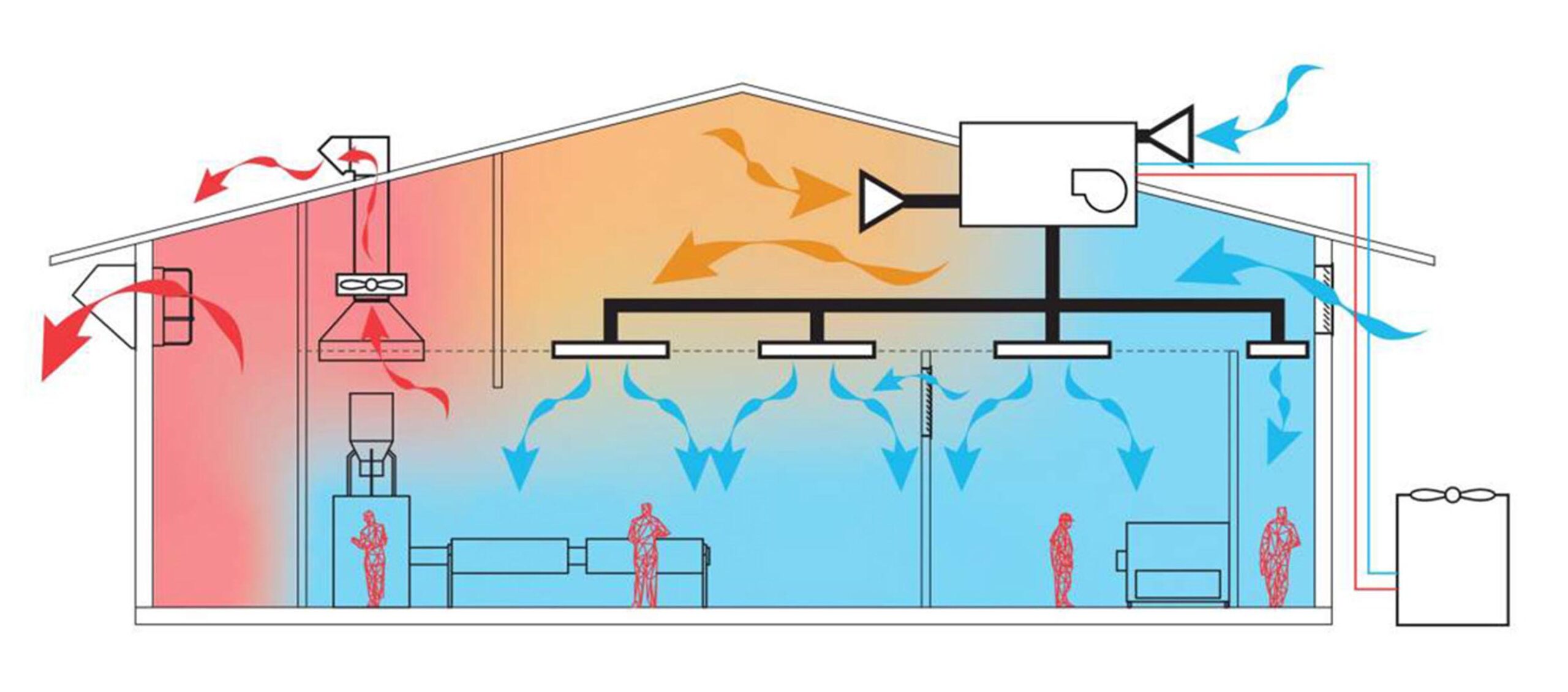8 ways to cool a factory
For most industrial factories, it’s process over people. The “human factor” comes in second place. In many North American factories, even those that make electric vehicles, this has translated into potentially sweltering, uncomfortable places. They can often make workers unproductive and, in some cases, unwell.
From a doing-the-right-thing perspective, it makes sense to put people and wellness first in today’s industrial facilities. And there are bottom-line reasons to emphasize worker comfort in the factory. The US manufacturing sector is booming. In a flourishing job market, and industrial workers have increasing choices of where to work. The hotter and unhealthier the factory floor, the more likely it is that workers will look to transfer out as soon as they can.
Recruiting and training new staff is costly. Manufacturing has one of the highest costs to hire, estimated at $5,100 by RecruiterBox. Deloitte says the US manufacturing sector could have a shortage of 2.1 million skilled jobs by 2030. Thus, worker retention is a bottom-line issue.

Whichever way you look at it—from a workplace wellness point of view or from a competing for talent angle—there are good reasons to explore options for climate control in the factory workplace. As a buildings-performance expert, I have decades of experience designing high-performance, sustainable, and energy-efficient systems for a variety of industrial clients. These include advanced manufacturers. And I see plenty of ways to design for wellness in industrial spaces.
What are the heat issues in manufacturing plants?
First, we need to understand that these manufacturing plants and similar facilities, by their nature, can be extremely hot. The industrial activities that take place in these plants may require melting and forming substances. The heat required to melt material radiates through the space. And factory work is active. Movement creates heat. The work may also require personal protective equipment, which heats up the body. All these things influence the thermal comfort—or discomfort—of those working in the factory. The U.S. Occupational Safety and Health Administration (OSHA) warns that some conditions have a great danger of heat stroke. But only a few states have heat standards for workers, and those are generally concerned with agriculture.
Most of these plants don’t have air conditioning. They are built on a budget. They leak air. They occupy huge volumes of space. Some might have some fans, but the truth is that these places get so hot that they open the doors to let the heat out. Even when it’s 100 degrees outside.
US code usually requires employers to maintain a minimum temperature, not a maximum.
Southern states such as Texas, Florida, and Georgia are seeing their manufacturing sectors grow. And heat issues, like climate, are regional. Companies with multiple locations may find that their factories in Northern states rarely have thermal comfort issues. However, their Nashville, Charlotte, or Oklahoma City facilities often do.

The issue is serious. It’s not unheard of for workers to faint under these conditions. Between 1992 and 2017, heat stress injuries killed 815 US workers, according to OSHA. More often, however, workers are leaving jobs due to the heat. Data in some areas shows a correlation between rising outdoor temperatures and worker resignations.
Health and safety are part of our design culture at Stantec. And no one should be investing in a plant that’s so uncomfortable it can’t hold onto its skilled staff. So, what are manufacturers’ options for retrofitting their existing plants?
Let’s look at interventions, from light to heavy, that can promote thermal comfort in factories.
1. Promote effective ventilation
We want to make sure the air in the factory is moving. So, our team designs more effective ventilation for these spaces. When cross ventilation occurs at a high level in factory spaces, it can result in stratification, meaning that little of the ventilated air reaches the occupants at floor level. In our analysis of overheated factory buildings in the South, we often encounter situations such as wall-mounted air louvers that don’t have fans to direct air toward areas where the workers are.
With good design, we can direct the incoming air to the right places. We often use large, slow ceiling-mounted fans (such as those made by Big Ass Fans) in our design for industrial spaces. These provide additional air circulation, which has a cooling effect. Fan placement is critical to effective air circulation.
2. Exhaust the hot air
We can locate the exhaust where the heat sources are, use fans to direct the heat out of the building and avoid mixing it into the main air supply. We can design systems that isolate the hotter areas, say shops where materials are melted down, and direct that hot air away toward exhaust systems.
3. Spot cool occupied spaces
We can engineer cooling systems for the places most occupied by people, even devise small cooling stations in contained areas. In this way, the workers can get relief with some conditioned air in certain areas.
We have designed spot cooling for individual workstations to provide comfort in hot industrial workplaces. And in extreme spaces where workers are exposed to very high temperatures, such as in a foundry or engine plant, we have created “cooling rooms” to give workers some relief.
4. Relocate or raise heat-producing equipment
We can raise the industrial equipment off the floor to keep heat from collecting there and creating hot zones. And if we can place equipment on the perimeter, we can more easily exhaust heat to the exterior using fans and exhaust vents.
5. Keep it dry
If we can avoid bringing moisture into the space, it will be more comfortable. We can dehumidify specific high-occupancy areas if need be. In the past, we have suggested cooling methods such as indirect evaporative cooling systems for spot cooling factories without increasing the humidity.
6. Shade the windows and use LED lighting
We can make sure occupied spaces are shaded from direct sunlight and mitigate the building’s solar gain. Also, using lower-temperature LED lighting throughout rather than incandescent lights helps reduce heat.
For example, at Sacramento Municipal District’s East Campus Operations Center in California, we used special window shades and louvers. They project daylight into the workspaces while keeping the sun’s heat out. We can use similar approaches in manufacturing plants.
7. Increase insulation and airtightness
The steel construction and limited insulation on the roof and walls subject industrial structures in warmer regions to solar heat gains. What’s worse is that we see this heat gain turns the physical elements of the building into unexpected radiators. Our analysis of these factories shows fire hydrants, columns, and steel elements in the interior becoming hot spots on the interior of the facility.

In most areas, when we add cooling to any existing factory that triggers compliance with the latest energy code. Therefore, installations to provide thermal comfort often require upgrades to the roof and walls with additional insulation to improve the R-value. To avoid losing the cooling effect from the newly retrofitted factory, we have recommended the installation of loading dock covers, new vestibules with rapid doors, and air curtains.
8. Use conditioned air or localized air conditioning
It may seem that we’re forced to choose human comfort over the environment when we choose to install AC in factories. But it might be necessary. In sunny areas, we can even power it with rooftop photovoltaics, mitigating carbon emissions.
Typically, when we design automotive plants for the big North American automakers, we provide “conditioned air.” It is 10 degrees cooler than outdoors. It’s not quite air conditioning, but it helps deliver a level of comfort.
We sometimes find ways to use AC strategically to cool the spaces people use. This can help in worker retention. Only a few years ago, we worked with a major auto manufacturer because their workers were finding their plant temperature conditions uncomfortable. They were quitting and going to other, cooler, facilities. Our new design provided air conditioning to specific maintenance areas to offer the workers relief, which improved retention.
The future of factories
There’s no magic trick to making factories more comfortable, But we can combine the points above in smart, low-emissions factory designs with an emphasis on well-being and an eye on budget.
There’s no reason the 21st-century manufacturing facility can’t be a healthy place to work.
The post "8 ways to cool a factory" appeared first on Building Design & Construction

